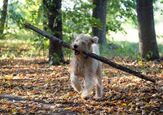How Do I Safely Introduce My Dog to Other Dogs?

Most dogs are social butterflies, wagging their tails with excitement to meet new friends. But just like us, some pups are a little shy or need extra time to warm up. Introducing your dog to a new furry companion can be exciting, but it’s also a situation that requires care and patience. Done right, these introductions can boost your dog’s confidence and help them build healthy relationships. Here’s your guide to making those first meetings safe and stress-free for everyone
involved.
Know Your Dog’s Personality
Before planning any doggy meet-and-greet, take a good look at your pup’s personality and past behavior around other dogs. Some dogs are naturally outgoing, while others might be timid or uncertain.
If your dog hasn’t had much exposure to other animals or shows signs of aggression (growling, barking, or lunging), it’s wise to consult a professional dog trainer or behaviorist for guidance. Knowing your dog’s comfort zone will help you plan ahead and set them up for success.
Pick the Perfect Spot
Where the introduction happens can make a big difference. Neutral territory is key—somewhere neither dog feels they need to "defend their turf." Avoid meeting at home or in your yard, as territorial instincts could kick in.
Instead, opt for a park, quiet street, or any open, low-distraction space. Look for a spot where both dogs can move freely without feeling cramped. It should also be safe and secure, with minimal traffic or other potential stressors.
Leash Up (But Keep It Chill)
Both dogs should be leashed for their first meeting, but here’s a pro tip: don’t keep the leash too tight. A taut leash can make your dog feel anxious and restricted, sending the wrong vibes.
Instead, use a sturdy leash and harness that gives you control while allowing your dog some natural movement. Watch their body language closely. Signs of a happy pup include wagging tails, relaxed postures, and curiosity-driven sniffing. On the flip side, growling, stiff stances, or raised hackles might mean it’s time to take a step back.
If either dog shows signs of discomfort, calmly separate them and give it another try later. If issues persist, don’t hesitate to seek help from a pro.
The Art of the Introduction
When both dogs seem calm and ready, let them approach each other slowly. Sniffing is their way of saying “hello” and is perfectly natural. Keep the interaction short and positive, and always supervise closely.
If the meeting goes well, reward both dogs with lots of praise or their favorite treats. Positive reinforcement helps them associate new friends with good vibes.
For the first few meetings, stick to one-on-one introductions. Avoid throwing your dog into a large group of unfamiliar dogs - it’s overwhelming and can be stressful. Gradually increase the interaction time as your dog gets more comfortable.
Patience Pays Off
Remember, successful introductions are all about patience and observation. Stay calm, stay positive, and celebrate the small wins. With your guidance and a little practice, your dog will be making friends in no time.

A proud mama to seven dogs and ten cats, Angela spends her days writing for her fellow pet parents and pampering her furballs, all of whom are rescues. When she's not gushing over her adorable cats or playing with her dogs, she can be found curled up with a good fantasy book.
More by Angela Vuckovic

























